How to Test Water in Food and Pharmaceutical Factory
Singapore water quality is regulated by the Environmental public health (water suitable for drinking) (No. 2) Regulations 2019.
The microbiological standard for this guideline states that E. coli as < 1cfu per 100ml. E. coli is the chosen fecal contamination indicator but coliform is usually tested in food and pharma as a broader net for contamination especially for secondary post water treatment plant contamination. The HACCP regulations for food factory stipulates eight areas where processors must have documented programs to ensure good sanitation. One of these emphasizes the safety of water and ice used is food processing. The good manufacturing practice CFR 21 part 110 states that “Operators should collect water samples from the farthest faucet from the line in the facility and preferably from the cold side. This should be done even if water is obtained from a safe city water system”. The reason for doing this is that bacteria may be flushed from biofilms accumulated in the piping. To test for E. coli and coliform, see link to pathogen testing. Many factories may choose to monitor enterococci as a wider net for early determination of fecal contamination. For a higher standard of testing for water in food and pharmaceutical industry the following standard is suggested
| Pathogenic Bacteria | None |
|---|---|
| Total Plate Count | < 500/mL |
| Coliforms | < 1/mL |
| Psychrotrophs | < 10/mL |
The total plate count enumerates the number of bacteria that grow in a nutrient agar under aerobic conditions. Other agar that are used for Total plate count or Aerobic plate count are plate count agar and tryptone soy agar. They are incubated at 35degC at 2 to 5 days. However enumeration of viable bacteria in water generally follows the Standard method for examination of water and waste water, which prefers the use of heterotrophic plate count.
The heterotrophic plate count (HPC), formerly known as the standard plate count, is a procedure for estimating the number of live, cultivable heterotrophic bacteria in water. A hectrotroph is an organism that cannot manufacture its own food by carbon fixation and depends on a carbon source. In the water industry it is used to measure the effectiveness of the water treatment process. The choice of culture medium, temperature, and incubation time are important with regard to HPC results for a given water sample. Both high-nutrient and low-nutrient media are used for HPC determinations. High-nutrient media are better for enumeration of bacteria from animals and humans. Low-nutrient media are better for enumeration of water-based bacteria found in aquatic systems, including drinking water. The most commonly employed heterotrophic medium is R2A. It was designed specifically as a low-nutrient, low-ionic strength formulation to isolate bacteria that have a water-based, rather than mammalian source.
Five agars are specified in the Standard method.
- Biolife Italiana’s Plate count agar (tryptone glucose yeast agar). This is a high nutrient agar which can be used in a wide variety of matrices, widely used in the past but can give lower counts than R2A or NWRI agar. Incubate at 35°C for 48±3hrs
- Biolife Italiana’s m-HPC agar (formally called standard plate count agar). This can be used to count HPC in waters with low levels of hectrotrophs such as treated potable water. This high nutrient agar is used only with membrane filter method. Incubate at 35°C for 48±3hrs
- Biolife Italiana’s R2A agar. Use for pour-plate, spread-plate, and membrane-filter methods. This low-nutrient agar was developed for use with potable treated water to monitor trends in potable-water production; this agar and a longer incubation period can improve the recovery of stressed and chlorine-tolerant bacteria. This medium may yield higher counts than high-nutrient formulations. Incubate at 20–28°C for 5 to 7 d.
- Biolife Italiana’s NWRI agar (HPCA): Use for pour-plate, spread-plate, and membrane-filter methods. This low-nutrient medium is likely to produce higher colony counts than high-nutrient media. This agar typically is not available in dehydrated form; it must be prepared from individual ingredients, making its use less desirable. Incubate at 20°C for 7 days.
- Enzyme substrate medium: SimPlate® medium is available commercially in sterile vessels for 100-mL multi-dose procedures or in test tubes for 10-mL unit-dose procedures.
Psychrotrophs is another bacteria that is needed for checking in water especially for pharmaceutical factories. Psychotrophs are bacteria that can grow at below 7°C. Monitoring of psychotrops are usually done with the indicator pseudomonas spp or pseudomonas aeruginosa. Fresh water are an ideal reservoir for P. aeruginosa. Other microbes specified in the USP for monitoring are staphylococcus and aspergilus niger and Bacillus cepacia.
Another pathogen commonly tested in factory water systems is Legionella. There are 42 named legionella species of which L. Pneumophilia is related to human disease. This disease is frequently contacted in factories by inhaling water droplets in hot or warm water systems like cooling towers. It is not possible to exterminate Legionella with disinfection of the system like heating or hyperchlorination. As such periodic examination of all hot water systems is the recommended practice.

Colilert is a convenient and highly accurate test for E. coli and coliforms in water. It does not require confirmation and is a standard test method for EPA. All media needed is prepared in dehydrated form and test can be completed in 15mins. Time to result is 24 hours. Detects a single colony count in 100ml and has a very low level of false positives and negatives with validation on a wide variety of water matrices. Results can be absence or presence or quantified by using a machine called quanti-tray.
Other microbe that is sometimes monitored is cryptosporidium parvum and gardia. However in Singapore this is seldom the problem as it is not an agricultural state.
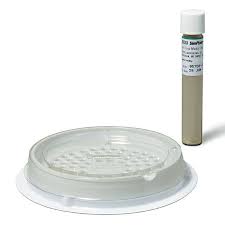
Simplate HPC uses multiple enzyme technology to detect heterotrophic plate count. The reagent contains multiple unique enzymes, each targeting a different bacterial enzyme. HPC will metabolize the enzyme substrate and produce a florescent signal. The method is simple to use and count and results are in 45-72 hrs. It is one of the method specified in the standard method for HPC and approved by the USEPA.
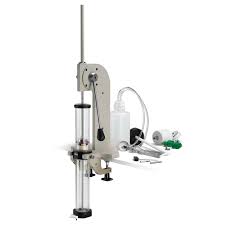
The IDEXX Filta-Max is an efficient system for collection of cryptosporidium and gardia protozoa and spores as it recovers a high number of target organism. Large volumes of water can be sampled ensuring high sensitivity. The filter is made of open cell foam discs that have been compressed to give the nominal porosity. After sampling the foam is decompressed, enabling the captured organism to be recovered by a simple washing and concentration procedure. It is USEPA method 1623 and UK DWI approved.
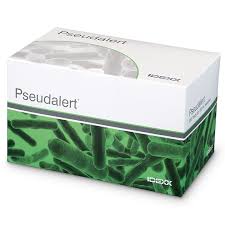
The Pseudalert test detects the presence pf pseudomonas aeruginosa in water in 24hrs. This test works through the hydrolysis of a substrate in the reagent. P. aeruginosa rapidly grow in the medium’s rich supply of amino acids, vitamins and other nutrients in the wells. Positive samples produce a blue fluorescence under UV light. Results are definitive without the need for confirmation. It complies with ISO 16266-2:2018. Quantification is available with the use of Quanti-Tray.
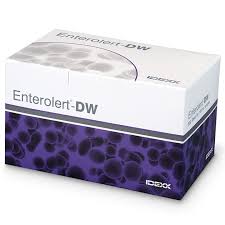
The Enterolert-DW Test uses a Defined Substrate Technology (DST) nutrient indicator to detect enterococci. When coupled with the IDEXX Quanti-Tray System, the Enterolert-DW Test provides quantitative confirmed results in 24 hours. The Enterolert-DW Test utilizes ortho-nitrophenyl-β-D-glucoside as a nutrient indicator and incorporates a specifically designed blue background color in its formulation. When the enzyme substrate is metabolized by enterococci, the sample turns from blue to green to indicate detection. Any change from the original color to green is considered a positive result. No ultraviolet light source is required.
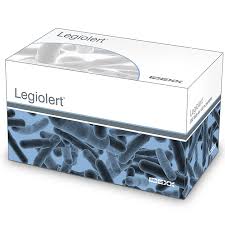
The Legiolert test detects Legionella pneumophilia in water samples. The bacteria digests a substrate that is present in the reagent and produce a brown color. It detects 1cfu in 100ml of water. Presence or absence is made by using the supplied sterile bottle and quantification is by using a Quanti-Tray. Incubate the sample at 39°C for 7 days and read the results by counting the number of brown or turbid wells in the Quanti-Tray. This is AFNOR approved.
SimPlate® for HPC Test Overview
Enterolert-DW: User's Guide
IDEXX Legiolert 100mL potable_UK

We provide the best services about science.
About Company
Sitemap
Please contact our friendly sales staff for more information.
Feel free to ask us questions. We would love to assist you !

